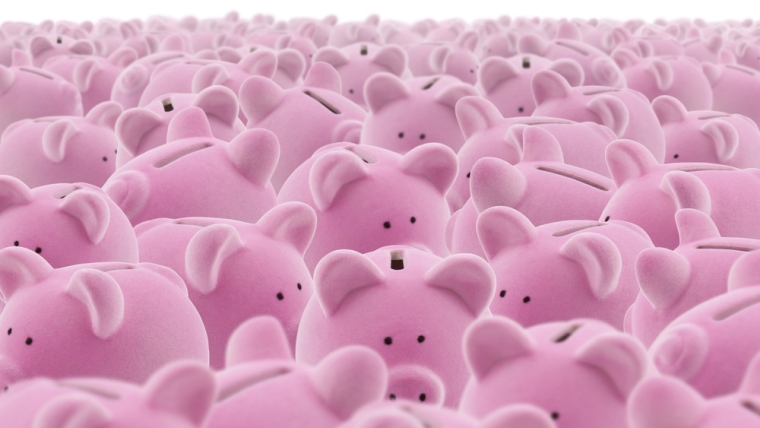
Interest paid on savings accounts has been falling for the past two years. While it has never been high for these at-call accounts, ever since the Global Financial Crisis and more recently the pandemic emergencies, central banks have been pushing official rates low and keeping them down with aggressive money-printing.
That surplus of funds pushed asset prices higher and interest lower.
But policy makers have started to call time on this easy-money period and interest rates have started to rise. Central bankers call it "normalisation" although rates are unlikely to go back to pre 2008 levels.
We have been tracking the average call/savings rates from banks and at one point in mid-2006 they actually reached 7.3% pa. See the chart below. Now they languish at about 0.1% pa.
These rates are very much affected by the Official Cash Rate policy rate, and are always at a discount to that. So we would expect them to rise as the OCR rises.
Recently we can see small rises starting in both term deposit offers, and now savings account offers. (Term deposits get all the press, so this article is focusing on the at-call savings accounts.)
The range of savings accounts has narrowed as institutions work to simplify their 'product' ranges. So it is easier to see the movements now.
And it is not as though savers are taking funds out of these very low returning accounts. You haver to wonder if they are not really motivated by the interest rate offers.

Here is a list of changes over the past week:
| Institution | Account name | Prior | change | New |
| % | bps | % | ||
| ANZ | Online call | 0.10 | +5 | 0.15 |
| Serious Saver | 0.30 | +15 | 0.45 | |
| PIE Call Fund | 0.10 | +5 | 0.15 | |
| ASB | FastSaver | 0.10 | +5 | 0.15 |
| PIE Cash Fund | 0.15 | +10 | 0.25 | |
| BNZ | RapidSave | 0.15 | +30 | 0.45 |
| Cooperative Bank | Step Saver | 0.35 | +15 | 0.50 |
| Heartland Bank | Direct Call | 0.50 | +15 | 0.65 |
| Notice Saver 32 days | 1.00 | +40 | 1.40 | |
| HSBC | E-Saver | 0.10 | +5 | 0.15 |
| Kiwibank | Online Call | 0.05 | +5 | 0.10 |
| Notice Saver 32 days | 0.55 | +15 | 0.70 | |
| Notice Saver 3 months | 1.25 | +25 | 1.50 | |
| Rabobank | RaboSaver | 0.50 | +15 | 0.65 |
| PremiumSaver | 1.00 | +15 | 1.15 | |
| Notice Saver 60 days | 1.15 | +15 | 1.40 | |
| TSB | WebSaver | 0.15 | +25 | 0.40 |
| PIE Cash Fund | 0.25 | +15 | 0.40 | |
| Westpac | Online Saver | 0.40 | +10 | 0.50 |
| Notice Saver 32 days | 0.50 | +15 | 0.65 |
Online call rate
Select chart tabs
12 Comments
May have missed Rabo's move to 1.4% for their 60 day Notice Saver.
Yes, I did. Sorry. I will add it now.
Appreciate all the monitoring you do, David!
Savings account balances is up 133% since April 2020, house prices is up 132% (Median) to 134% (REINZ) during the same period.
There is no real changes in affordability in coming up with a house deposit since April 2020 despite all the hype.
At a macro level, yes but it's likely that a good share of the savings balance increases have gone to existing homeowners who don't need to save for a deposit and less so to the renters who do. Like saying unemployment is at a record low so there must be little suffering occurring in the economy..
Still extremely low
They are still offering less than the base OCR rate of 0.75% They are not doing their customers any favours.
Just BS really. I recall in the 80's when interest rates on savings were 10% +. My then wife, who worked for the ASB, told me that the bank made most of it's money through over night or short term bridging loans. She told me they made some serious money doing this. I assume they still do.
Considering their behaviour and the risks they have created in, and posed for the economy I feel they should be paying depositors a lot more for their money, if only in recognition of that risk.
Blatant theft should be a prison sentence. This is practiced by all Banks, but no prison sentence so far.
Nuff said.
Inflation adjusted - going backwards.
Into assets she goes
Rabobank - Are like possums in the headlights. on AML. Staff haven't got a clue, doesnt know basics and know only one thing which is dear xxx.. we will be freezing your account until ....
Can anyone tell me why the ASB is lagging behind the other big banks in Term Deposit Rates? Is it that they are so bloated with funds they just don't need to remain competitive?

We welcome your comments below. If you are not already registered, please register to comment
Remember we welcome robust, respectful and insightful debate. We don't welcome abusive or defamatory comments and will de-register those repeatedly making such comments. Our current comment policy is here.